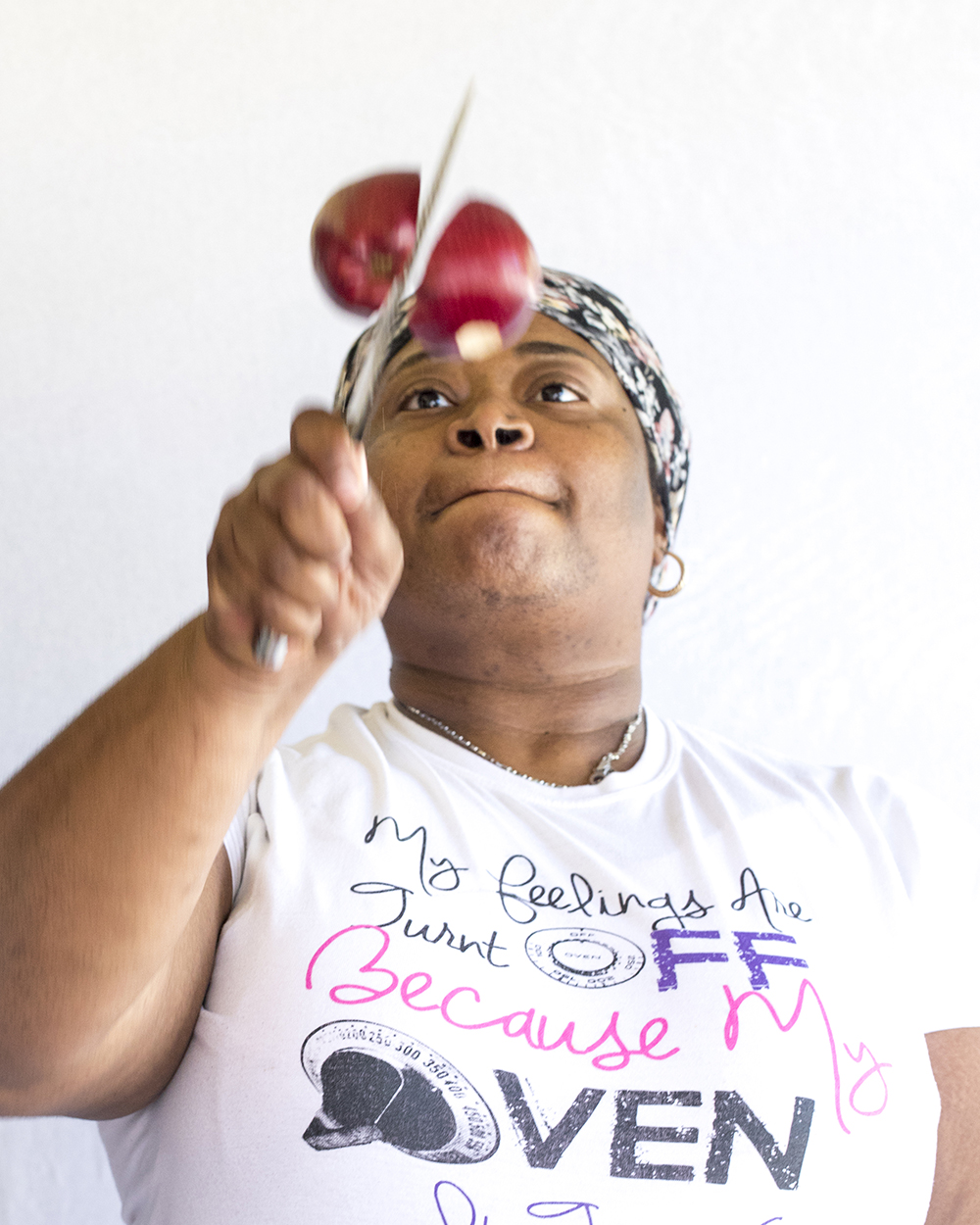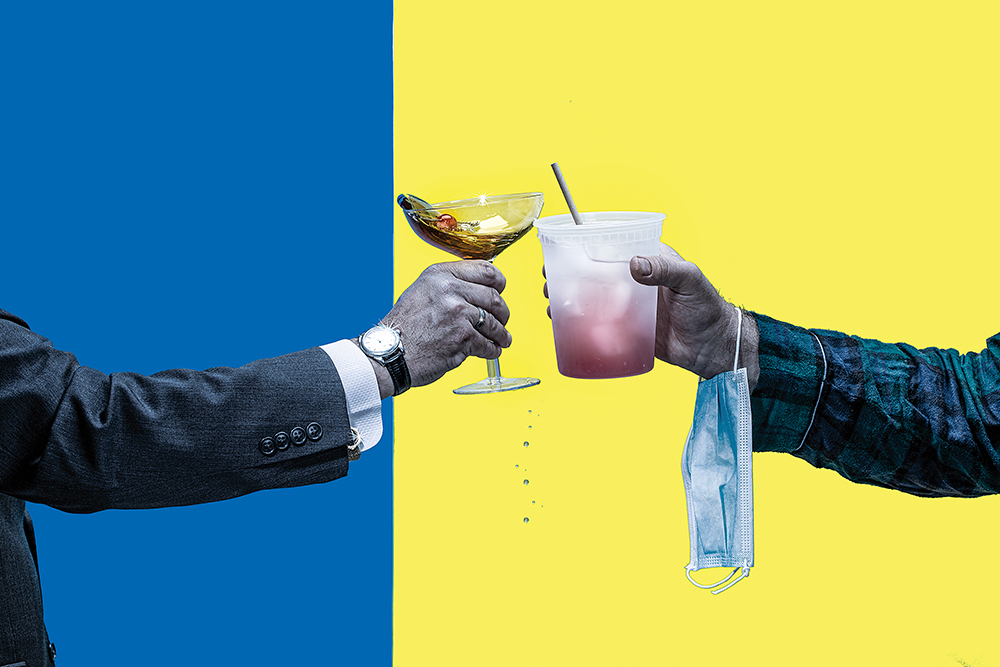The COVID-19 pandemic is not over. The Johns Hopkins University of Medicine’s Coronavirus Resource Center, which has been tracking the spread of the disease for more than a year, reports that 165 million people have tested positive for SARS-CoV-2 worldwide; 3.4 million people have died from the disease. The United States has both the most cases, with just over 33 million, and the most deaths, with 588,548. In Shelby County, roughly one in 10 people have been infected, and 1,644 people have died.
The development of COVID vaccines and a massive government push to get “shots in arms” has blunted the spread of the disease. In real-world conditions, mRNA vaccines such as Pfizer and Moderna have been found to reduce an individual’s chance of infection by more than 90 percent. A two-shot dose virtually eliminates the possibility of hospitalization and death.
Vaccine development has been a science success story, but we’re not out of the woods yet. It’s unlikely COVID will ever go away entirely. The virus will go from pandemic to endemic, with flu-like regional outbreaks recurring every year. It will take time to vaccinate the world. Early fears about new virus variants able to evade vaccine-generated antibodies have not materialized, but most experts believe it’s just a matter of time before a new mutation makes a vaccine booster shot necessary.
As restrictions ease with the falling case numbers, the country seems to be crawling back to normal. Interviews with Memphians from different fields impacted by the pandemic reveal how this new normal will be different from the old.

Dining In/Out
Tamra Patterson, owner of Chef Tam’s Underground Cafe in the Edge District, was just getting her business off the ground when the pandemic hit. “In February of 2020, we saw such great success, having just relocated from Cooper-Young,” she says. “We were right in the middle of Black Restaurant Week, and we were expecting for that to catapult us to new heights. As you could imagine, we were kind of sucker-punched in March.”
Instead of managing new growth, Patterson found herself facing no good options. “We had to make the really hard call of do we close, or do we do what we ended up doing, which is strictly going to-go?”
The constantly changing health directives made closing the dining room the logical choice. “I didn’t want the yo-yo: You can open but you can only have six people. You can open but you can only have 20 people. I felt like the inconsistency for a customer would be much more detrimental than what was happening.”
Eric Vernon of The Bar-B-Q Shop agrees that dine-out business was the only play available but says a good restaurant is about more than just the food. “At The Bar-B-Q Shop, you come in, you sit down, you stay overtime, and the staff gets to know you. So a lot of what we did was cut right off the bat. We don’t just sell food, you know. It’s an atmosphere thing. I think we went into a little bit of panic mode. I couldn’t worry about atmosphere; I just had to get the food out. So within a three-week, maybe four-week process, we did what normally takes a year to develop. We had to come up with an online system for people to pick up, and we had to do a delivery system, and we had to figure out how to get all these systems to ring up in our kitchen.”

Steve Voss faced the same challenge across the nine Huey’s locations. “We hit the streets as quickly as possible to figure out, how are we going to get food out to our guests efficiently and timely while maintaining the quality? So we went straight into curbside.”
Customers liked picking up food to eat at home, but the learning curve was steep, says Vernon. “We went from people placing orders for ribs and a couple of sandwiches to-go to doing full family orders. People don’t get that it takes longer for us to bag up an order for a family than it does to get it to the table. We had never done to-go orders for seven or eight people, every other time the phone rang. We had people calling to say they’re outside. Well, we’ve got a front door and a back door, so we’re running out to the front, they’re not there, so then we’re running out back!”
Restaurateurs got a crash course in the delivery business. “We’ve had people approach us in the past, wanting us to venture into that area,” Voss says. “We’ve developed some systems with DoorDash and ChowNow, and now it is a tremendous part of our business, but it’s really hard to execute well. It’s like having a whole other department in the building.”

Take-out wasn’t just for restaurants. “We had to shut down the taproom, which was a major source of revenue for our business,” says Crosstown Brewing Company owner Will Goodwin. “But people kept coming, and we made beers available in six-packs. I remember having a stack of beer sitting in the middle of the taproom, and we had a skeleton crew taking pre-orders and running beer out the door to people in cars.”
Goodwin says pandemic-era liquor law changes saved his business. “Beer is kind of hung up in this antiquated, three-tier system where there’s a manufacturer, there’s a distributor, and there’s a retailer.”
The pandemic proved direct sales from brewery to customer is “a new business model that could be sustained. We’re still doing deliveries on Mondays and Tuesdays from the brewery. I’ve got one guy that orders a mixed case of beer every Monday. He’s done it for a year and a half.”
Vernon says his dining room is filling back up, and the take-out business is bustling. After having to cut his staff in half, re-hiring is proving difficult. “Drive down Madison, and there’s a help wanted sign in every restaurant.”
The new normal will likely include both curbside service and increased delivery options, says Voss. “We’ve been very fortunate to have great managers and tremendous support from the community and our wage employees to navigate all this. It’s been a heck of a ride, and we’re still battling every day.”
Out of the Office
For millions of office workers, 2020 meant taking meetings in your Zoom shirt and sweatpants. Kirk Johnston is the founder and executive partner of Vaco, a consulting and staffing firm specializing in technology, finance, accounting, supply chain, and logistics. He says many businesses who were dipping their toes in remote-work technology found themselves shoved into the deep end. “I think a lot of them were just slow to adapt, but now that it’s been proven that people can work remotely and be very effective, companies have been forced to say, ‘Gosh, this does work, and there’s no reason we shouldn’t be more flexible because it makes people more productive when they can do the things they need to do for their family and also get their job done and done well.’”
Just before the pandemic, Memphian Audra Watt started a new job as vice president of a medical device company based in Lebanon, Tennessee. “I lead a marketing organization of individuals all over the country, and we’re a global organization, so we interact with people all over the world,” she says. “We have a lot of folks that already worked remotely. I’d never really worked with remote employees. I’d always been with people, who reported to me and my bosses, in the office. So I was like, this is going to be weird. I had no idea it was going to be the new normal. A month into my new job, everybody started working from home. I was shocked at how productive everybody was! It was like, well, we don’t actually need to all be together. Our productivity just skyrocketed to the point where I was telling people, ‘Hey, you don’t need to work nights and weekends.’”
The experience was an eye-opener. “I don’t see a reason to go back to the office in the full-time capacity we had in the past,” she says.
As vaccinations decrease the danger of an office outbreak, a new hybrid model is likely to take hold. “There’s a very hands-on element to what I do, with product development and product management,” says Watt. “Being able to touch and feel, and look at prototypes, and talk to people on the line is super critical. But I don’t do that every day. If I look back at my time in the office, a lot of it was spent on the phone. … I think one of the most compelling things I realized is how much time I spent traveling to get to in-person meetings, which probably could have been accomplished virtually.”
Like most teachers, John Rash, assistant professor at the Center for the Study of Southern Culture at the University of Mississippi, spent the last year and a half teaching remotely. “I would say it went pretty well for certain areas,” he says. “There were definitely some areas where it was not as good as in person, but there’re some areas that actually worked better. … I have one class I teach nearly every semester with a hundred students in it. It’s just not possible to address their questions and individual concerns during class time. A lot of those things that might take two or three back-and-forth emails, now, we can jump on Zoom and get it settled in four or five minutes. I feel like I’ve had a lot more contact with students over the past year than I did previously, just because of that accessibility that’s available through Zoom.”
Johnston says some form of remote work is here to stay. “The question is going to be, what is the best model for each individual company and each individual person? I think both are going to have to be flexible. Those companies that are just saying, ‘No, we’re going back eight-to-five, five days a week,’ will have a hard time recruiting people. And I think those people who are dogmatic and say, ‘I will only work remotely,’ will not find themselves in the best company or the best position. There’s going to be some kind of a compromise on both sides.”

The Show Must Go On
Amy LaVere and Will Sexton were touring in support of two new albums when COVID shut the country down. “We had gigs just falling away off the calendar,” LaVere says. “We had one big one left in Brooklyn, and it canceled because they shut the city down.”
On the terrifying drive back to Memphis, they stocked up on rice and beans and prepared to hunker down indefinitely. “What will become of us? Is this the end of mankind?”
LaVere and Sexton were among the first Memphis musicians to try streaming shows as an alternative to live gigs. “We just had to figure out a way to try to make a living, but it didn’t really work,” she says. “For the first couple of months, we were doing one a week, and people were very, very generous and sweet to us. It helped us get back on our feet. But then, it just became so saturated, and there were so many people doing what we were doing, that we really just kept at it to keep our craft up. It was a thing to do every week to just not lose your mind.”
Eventually, LaVere and Sexton started playing private, socially distanced shows in their driveway. “I hated the livestream so much,” she says. “It’s really difficult to perform to nobody.”
Zac Ives says the pandemic accelerated changes at Goner Records. “We were already working on a website and converting everything over to a more functional, online way to sell records. We’ve been living in the ’90s for the majority of our lifetime as a company online, and for a while that was fun and it worked. But we went ahead and launched the site we had been working on about a month before it was ready. That was our lifeline.”
Applying for a PPP loan and emergency grants forced Ives to re-examine long-standing assumptions. “The grants made us pull a bunch of different numbers and look at things differently,” Ives says. “My biggest takeaway from all of this is that it forced everybody to get way more creative, and way more flexible with how their business works.
“We were pushing people online to shop, but we also started thinking, if there are no shows, how can we get these records out when the bands can’t tour with them? How do you put stuff in front of people? Our solution was Goner TV.”
Goner had already been livestreaming their annual Gonerfest weekends, but after participating in a streaming festival over Memorial Day weekend 2020, Ives says they realized the bi-weekly show needed to be more than music. “The idea was sort of like the public-access cable shows we used to pass around on VHS tapes,” he says. “People would do all kinds of crazy stuff.”
Filmed on phones and laptops and streaming on Twitch and YouTube, the typical Goner TV episode includes live performances, music videos, comedy, drag queen tarot card readings, puppet shows, and even cooking and cocktail demonstrations. “We recognized that the power of all of this was that there were all these other talented people around who wanted to try to do stuff together. And it really did kind of bring that community back together. We’d get done with these things and be like, ‘Wow, how’d we pull that off?’”
In August 2020, Gretchen McLennon became the CEO of Ballet Memphis. “I think from a strategic standpoint, it made coming into leadership a little more compelling because all the rules go out the window in a global pandemic,” she says. “Dorothy Gunther Pugh left a wonderful legacy. Ballet is a very traditional art form, but it’s time to pivot, and the world was in the midst of a pivot. We just didn’t know where we were going.”
With grants and a PPP loan keeping dancers on staff, Ballet Memphis started streaming shows as an outreach, including an elaborate holiday production of The Nutcracker. Learning a new medium on the fly was difficult, but rewarding. “We had to be thoughtful about the moment in time we were in,” she says. “We successfully filmed over the course of two weeks, but we had to do daily testing of the crew in our professional company and all the staff that was going to be on set. … We wanted that to be a gift to the city of Memphis.”
Held last October, the 2020 Indie Memphis Film Festival was a hybrid of drive-in screenings and streaming offerings. “It was a huge success, without a doubt,” says Director of Artist Development Joseph Carr. “There was no existing infrastructure because no one was doing this prior to the pandemic. It was actually very frowned upon in the film festival world to have films online. Everybody kind of stepped up and rallied around each other in the community and really created a sense that we can all learn from each other. It brought a lot of the festivals much closer together.”
Carr says the virtual format allowed Indie Memphis to expand its audience. “We had filmmakers from as far away as South Korea and Jerusalem, but also we had audiences from those regions. That is impossible to get in any other way.”
Melanie Addington is one of very few people who have led two film festivals during the pandemic. The 2020 Oxford Film Festival was one of the first to go virtual, and by the time 2021 rolled around, the winter wave had subsided enough to allow for some limited in-person and outdoor screenings. “It was, for so many people, literally the first time they’ve been around other people again. And so all those awkward post-vaccine conversations. Like, do we hug? We don’t know what to do with each other anymore when we’re physically in the same space.”
Addington just accepted a new position as director of the Tallgrass Film Festival in Kansas, which means she will be throwing her third pandemic-era festival this fall. “A lot of us have learned there’s a larger market out there who can’t just drop everything for five days and watch a hundred movies. It’s going to allow for a bigger audience.”
McLennon says Ballet Memphis has a full, in-person season planned next year and sees a future for streaming shows. “In our virtual content, we can be more exploratory at low-risk to see, does it resonate? Does it work?”
LaVere sees signs of life in the live music world. “Who knows what the future will hold in the winter, but we’re full steam ahead right now. My calendar is filling up. It seems like every day, the phone is ringing with a new show.”
